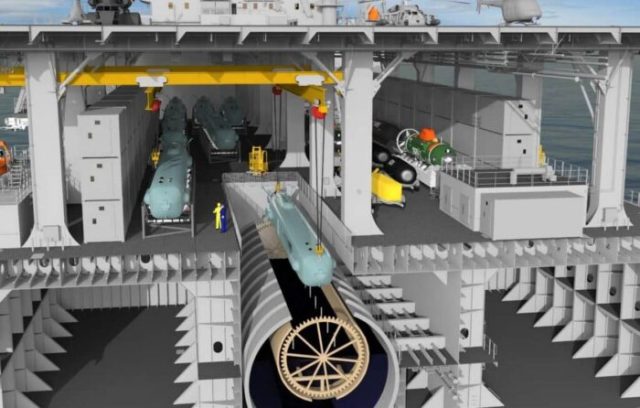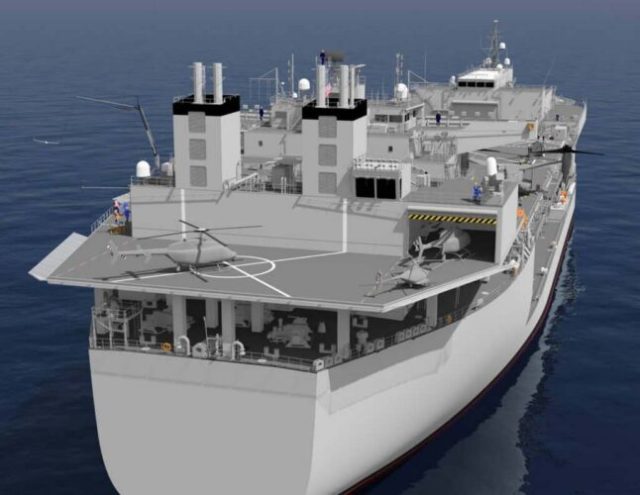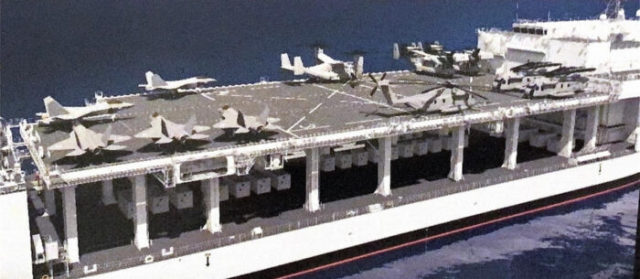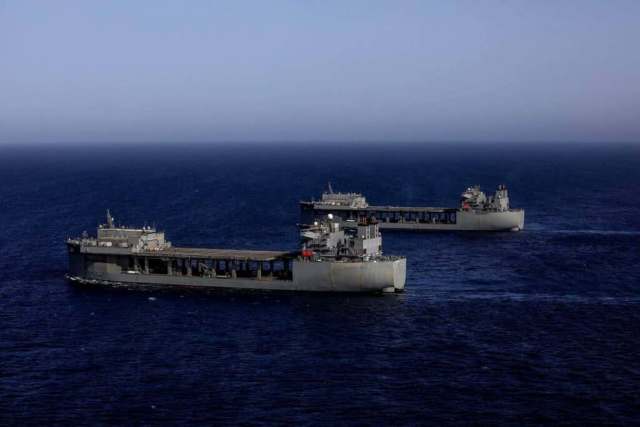In an effort to meet the new requirements of the US Navy and the Marine Corps, the American company General Dynamics NASSCO has developed several major modifications for its line of Expeditionary Sea Bases (ESB). Due to the commercial origin of the ESB from the Alaska class oil tanker, the potential of this class has been described by NASSCO as "unlimited". This "unlimited potential" has led to the development of modification concepts that can turn ESBs into motherboards for drones or even into aircraft support ships.
Although these potential modifications debuted during the 2022 Maritime and Airspace Symposium (Sea Air Space 2022), the following year the company again demonstrated the same projects at the National Symposium of the Association of Surface Navies (Surface Navy Association National Symposium).
Jim STROCK, an independent consultant working with NASSCO on the ESB, explained the process that NASSCO used to adapt these concepts and capabilities to the future requirements of the armed forces:
"We did two things. We have reviewed future operational concepts. We have reviewed expeditionary operations from forward bases, distributed maritime operations and coastal operations in conflict… And then we wrote documents on how ships could perform tasks within these concepts."
The modifications developed by NASSO include a new aft flight deck to support UAV flights, additional repair facilities and the ability to replenish supplies at sea with the help of other vessels. Of these, the two most notable and comprehensive modifications of expeditionary naval bases are the plans for installing a compartment for uninhabited underwater vehicles (NPA) and, apparently, the placement of naval aviation on the ESB, including the F-35B.
Strok explained that thanks to a specially manufactured descent system located inside the vessel, the ESB can support various NPA, including Orca Extra-Large UUV .

Conceptual drawing of the descent and recovery of the NPA on board the ESB
NASSCO studied the rotation system due to stability problems at sea caused by descent and recovery inside the ship. It is believed that the indoor pool is much better at mitigating the effects of sea waves and rising water. It stabilizes the NPA and holds it in the desired position when the device is lowered into the water.

Concepts of a helipad aft to support the operation of the UAV
The already extensive ESB command and control facilities were allocated by D. Strok as one of the reasons why ships can be modified into motherships for unmanned systems.
"We have almost 40 places for operational planners, so there are very extensive C4I facilities on this ship that can be used in various ways, including information integration of unmanned systems."
Answering the question of how and why the F-35B will be supported by these modifications, the specialist explained:
"So, I want to be very clear. This ship was not designed to operate the F-35. Can it transport F-35 aircraft to the theater of operations, which can be transferred to landing ships and aircraft carriers? Yes. Can an F-35 with little fuel and no weapons move from one ship to another? Potentially, yes. This will include modifications to the flight deck to heat the deck, modifications to reflect the jet stream."

As part of the modification concept, ESB supports US Marine Corps aircraft, making room for amphibious ships that will turn into F-35B Lightning aircraft carriers
Consequently, the proposed ESB modifications will not be able to support F-35B operations like those used on more traditional landing craft. Instead, the concept outlined by NASSCO involves landing other Marine Corps aircraft, such as V-22 Ospreys and CH-53K King Stallions, and the means to fully support them so that landing craft capable of supporting the F-35B can "be configured as F-35 aircraft carriers."
The ESB ASPL concept allows you to recharge VLS at sea
Another modification studied by NASSCO was the ability of the expeditionary marine base to perform high-precision lifting at sea (At-Sea Precision Lift, ASPL). Theoretically, this would allow the ESB to transfer supplies and equipment from other ships while at sea. When asked whether this modification will allow recharging vertical launch systems (VLS) at sea, the developer's expert said that the Office of Naval Research uses all the same technologies that are shown in the ESB ASPL modification concept.
As with previous modifications, ASPL takes into account the requirements and potential requests of the US Navy in the future. Secretary of the Navy Carlos del Toro has repeatedly called for the possibility of recharging VLS at sea, rather than in port.
According to the materials navalnews.com

